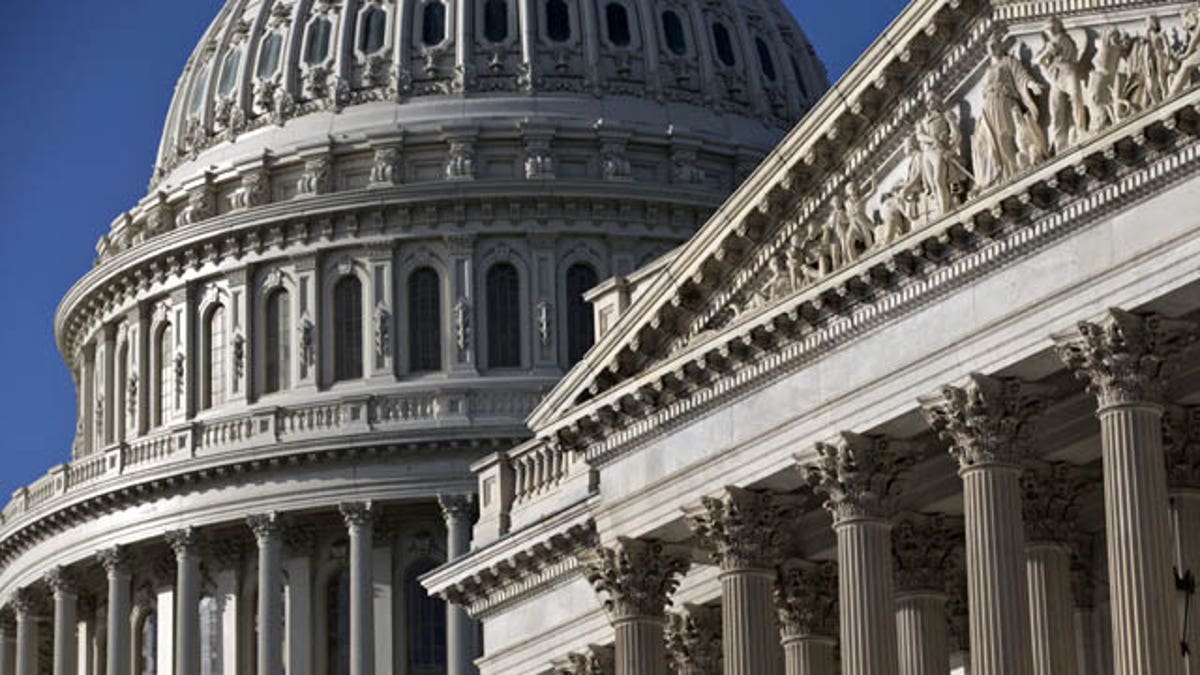
October 14, 2013: The Senate, right, and the Capitol Dome are seen in Washington Monday. (AP Photo/J. Scott Applewhite)
We’ve all heard that one type of energy or another is the “Bridge to the Future.” We’ve heard variously that it’s wind power, or solar power, or natural gas, or biofuels, or enhanced extraction methods, like hydraulic fracturing, or nuclear energy – and we’ve also heard that to get to the other side, we have to curtail, ration or even eliminate sources of energy because they threaten the common good, or because they can’t be developed economically, or because we should concentrate on proven sources, rather than investing in distracting experiments.
But I’d like to challenge you to think differently. We’re all on the “Bridge to the Future” – and all of us must work together to make the crossing.
Right now the other side of the bridge is lost in the fog of gridlock, confusion, partisanship and distrust.
We can’t see the reality of our energy future – but given all the competing interests, any acceptable solution must be created collaboratively, as opposed to one which is imposed involuntarily.
The path to the future must be lit by open minds that accept a common truth, namely, that there is no “bad” energy.
All sources of energy are beneficial to mankind, or at least potentially so. All sources of energy must be explored and developed to their fullest potential consistent with their risks, benefits, and costs.
Each source of energy – every one – is a vital part of our future’s framework. The question is not which one must be discarded, or whether any should be abandoned. Instead, we must ask what role each source can play, what needs each can meet, and what prosperity each can deliver.
Ultimately, our decisions must also consider what costs we must pay, what risks we must take, and what balance we must strike to assign each source its rightful place as we move forward.
The path to the future must embrace compromise and flexibility – not brittle arguments that break into irreconcilable shards of discontent with every confrontation.
Our nation has faced equally important moments in its history – not just at its founding and in its triumphs, but also in moments of crisis and challenge, and in times of despair and disappointment.
In those national moments – and in our personal ones – we intuitively know that the surest route to failure is to avoid conversation, and the most certain path to disaster turns away from constructive communications.
Conflict and compromise are essential elements of statesmanship – an art that transforms partisanship into dialogue, and pursues consensus to reach solutions.
If we are to have constructive dialogue – as opposed to the current gridlock – we must provide forums where participants listen as well as they speak, where creative collaboration is not quashed by dogmatic distractions, and where argument is aimed not at winning, but at enlightenment.
Together – and only together – can we build and cross the bridge to the future – a bridge built not of concrete, steel and wire – a bridge not even constructed from a blend of varying sources of energy. Before any durable foundations may be laid, the bridge to the future must first be built between ourselves.
